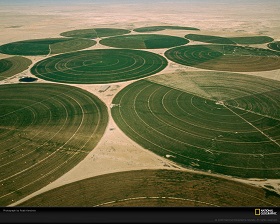Natural disasters and environmental catastrophe can have a profound effect on the geopolitical landscape and create a diplomatic quagmire for local governments as well as surrounding superpowers. Among superpowers like the United States, China and Russia, the unique construct of disaster diplomacy can be a welcomed opportunity to display soft power but can also expose the true intentions and expectation that follows humanitarian aid and economic assistance following an environmental crisis.
Natural disasters and environmental catastrophe can have a profound effect on the geopolitical landscape and create a diplomatic quagmire for local governments as well as surrounding superpowers. While immediate response to these disasters are often carried out with compassion and without discrimination to specific ethnic groups or political affiliations, the situation can evolve into an adversarial tug-of-war between states who are seeking to exert political, economic, and cultural influence in a now vulnerable region. Among superpowers like the United States, China and Russia, the unique construct of disaster diplomacy can be a welcomed opportunity to display soft power but can also expose the true intentions and expectation that follows humanitarian aid and economic assistance following an environmental crisis.
The intensifying competition over dwindling natural resources, coupled with population growth, has provided a platform for dispute that can affect local communities as well as neighboring superpowers. This has provided involved parties with a baseline for diplomatic relations following an environmental disaster. While navigating around conflicting ideologies and ethnicities, a general consensus can be built on the protection of natural resources and the need to prevent future environmental catastrophes. Disaster diplomacy can be achieved through this context as the prominence of natural resources and its protection often ensure future economic stability for a region and its people. Global environmental sustainability will have long-lasting impacts on the mechanics of international and regional peace, creating the need for a focused brand of diplomacy.
What constitutes a natural or environmentally-driven disaster?
As we've seen in the aftermath of Hurricane Katrina, Haiti's devastating earthquake, and the most recent Pakistani floods, environmental catastrophes disrupt the daily lives of individuals and can destroy entire communities. These types of disasters exacerbate the already marginalized lives of the most vulnerable members of an affected population. The impact of storms, earthquakes, and tsunamis are always disproportionate among existing social classes, resulting in immediate and sometimes permanent consequences for those with limited access to available resources. In developing countries, population growth and poverty have led human migration to parts of the world where natural hazard and extreme weather are commonplace. The United Nations defines a natural disaster as “The consequences of events triggered by natural hazards that overwhelm local response capacity and seriously affect the social and economic development of a region”. While the definition implies cause and effect from a purely natural occurrence, the consequences are augmented by the impact of humanity's widespread industrialization. Deforestation, fossil-fuel related pollution, and infrastructure deterioration are just some of the potential ramifications.
How will climate change affect environmental and natural disaster diplomacy?
As the debate over the existence of man-made climate change continues, organizations like NASA, the Intergovernmental Panel on Climate Change and the United Nations insist that the unnatural rise of global temperatures from greenhouse emissions will have an impact on eventual environmental catastrophes. While details among the research vary, the consensus determines that an increase in global temperatures will result in super storms and widespread drought. According to NASA “Changes in climate not only affect average temperatures, but also extreme temperatures, increasing the likelihood of weather-related natural disasters”. Parallel to these growing occurrences of extreme environmental events, the political maneuvering among affected and neighboring states is also evolving. Land disputes are growing, becoming a catalyst for conflict and violence. The Environmental Cooperation for Peacebuilding initiative of the United Nations Environmental Program explains “peace negotiations have increasingly addressed these issues directly. Indeed, all major peace agreements since 2005 include provisions on land and natural resources.” Within the framework of disaster diplomacy, climate change and its lasting effects can be a potent catalyst for opening dialogue between hostile nations. More importantly, cooperation during post-disaster diplomatic efforts can create a platform for analyzing future risks and new hazards associated with climate change.
How does the human rights factor fit into this construct?
Often the point of contention among organizations and governments is the importance of human rights in a post-disaster environment. The 2004 Indian Ocean earthquake and following tsunami magnified the issue and brought it to the global stage for discussion. The mega-thrust earthquake resulted in a series of devastating tsunamis on the coasts of nations bordering the Indian Ocean, killing over 230,000 people in Indonesia, Sri Lanka, India, Thailand, Maldives and Somalia. The scale of this disaster and the response show a clear example of international cooperation among NGOs and governments to establish permanent programs and lasting influence in the region. Countless international organizations, NGOs and bilateral aid agencies provided well-funded support to the region and it's people in the immediate aftermath of the devastation. The large presence of these organizations enabled the allocation of resources to monitor inequitable patterns of assistance and neglect. This event illustrates how the patterns of discrimination among economic, social and cultural groups emerge shortly after a disaster occurs, and increase the longer the consequences, such as displacement, last. Affected populations are sometimes forced to leave their homes due to infrastructure collapse and fear of future disasters. This is where human rights challenges occur more frequently. Displaced persons are often met with unequal access to aid, involuntary resettlement, property and documentation loss, and gender/sexually based discrimination. These occurrences are often the catalyst for outbreaks of violence, prompting outside powers to become watchdogs, engaging in an aggressive dialogue with both internal and external powers that have existing influence in the affected region. While human rights can be a tool for brokering power among influencers — the goals, intentions and results are far grander in scale. Disaster diplomacy is not about the disaster or the affected people, but about the geopolitical fallout, access to the affected regions’ resources, and the positioning of military assets for national security.
The need for environmental and disaster diplomacy to navigate the looming water shortage crisis
In the coming years tensions among embattled nations will rise due to a competition for dwindling potable water resources. According to the 2015 UN World Water Development report “Unsustainable development pathways and governance failures have affected the quality and availability of water resources, compromising their capacity to generate social and economic benefits. Economic growth itself is not a guarantee for wider social progress”. This will be a transformative issue as the global population continues to grow, and shifts in human migration from rural to urban areas become more common. This is especially true in developing nations but it is also a trend seen globally for many decades. As urbanization increases, so does the demand for accessible clean water. The world’s population is expected to increase by more than a billion as early as 2050 and given that one out of nine people do not currently have access to potable water, the resulting crisis will lead to a long-term cumulative disaster. The UN report heavily implicates climate change as a culprit in this looming crisis as extreme weather and limited rainfall can lead to the further depletion of water reserves. The effects of the water shortage will hit farms first where crops will begin to fail at an alarming rate and where job losses in surrounding industries begin to manifest. This industrial decline leads to socioeconomic collapse and higher levels of poverty. The world will also see a dramatic increase in health problems—many of which are already taking shape today. For example, in the Democratic Republic of the Congo, Papua New Guinea, and Mozambique nearly 1,000 children die every day from diarrhoeal disease because they consistently ingest unsafe drinking water. More than half the population in these three countries does not have access to clean water, which leads to widespread hygiene and sanitation problems. Lack of access to this most needed resource coupled with a decline in the quality of life for those in the most affected areas will certainly lead to an increase in violent conflict, especially in the developing world. Let this be a clear example of why environmental catastrophe and natural disaster can be a neutral platform for diplomacy among contending powers. Water is a resource intrinsic to the survival, security and stability of the entire planet and transcends regional conflict as well as superpower rivalry.








